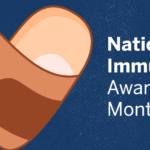It Takes a Village: How Mancelona, Michigan Worked Together to Improve Health and Education
By Mike Swain, MPH, Community Health Coordinator, Health Department of Northwest Michigan
In the early 1990s, residents of Mancelona (a northern Michigan town) had limited access to healthcare, social services and higher education and there were sparse employment opportunities.
With the lowest per capita income in the immediate area, most families lived in poverty, and were underinsured, uninsured altogether or enrolled in Medicaid.
Some of the community’s youngest were hardest hit: the area had the state’s highest rates of youth physical and sexual abuse, teen pregnancies, drinking and drug use. And as could be expected, these health risks had a significant impact on academic performance – with behavior problems in the classroom, low grades, and high dropout rates. In the 1994-95 school year, 39 percent of Mancelona high schoolers dropped out and just 64 percent of the senior class graduated.
Terry McCleod, the Middle School Principal at the time, recognized the critical role of student health and wellness in academic success – and he led the charge for change in Mancelona.
First, he brought together a grassroots network of public and private service providers. Along with a three year grant from the W.K. Kellogg Foundation, they built Project S.H.A.R.E. (School Home Alliance for Restructured Education) to provide a comprehensive assessment and evaluation of the gaps and needs in Mancelona.
The results made it clear that any successful, lasting intervention would need to improve the environment and families by addressing the underlying, interconnected issues of poverty. The layout of the community’s schools—all three were essentially on the same campus—allowed for a unique solution: building a dedicated family resource center right next to school grounds. With thoughtful outreach, community advocates and the public health administration were engaged in the cause, and the land for this building was secured.
The group secured a grant from the Michigan Department of Health and Human Services (MDHHS) to fund the beginning of construction, with the Mancelona Family Resource Center (MFRC) officially opening in 1996.
MFRC housed health, social, daycare, educational, and economic services, offering a unique and comprehensive suite of services to support Mancelona’s students and their families. Staffing and programs were brought in with continued support from Project S.H.A.R.E., including the Michigan Works! Association – which resided in a dedicated wing of the MFRC.
Michigan Works! played a critical role in turning the tide of poverty by strengthening the employability of adults with workforce development services and mobilization of local businesses.
Still, quality healthcare was at the heart, with the local Health Department providing previously unattainable care, including a Dental Health Clinic, on site. Additionally, the MFRC team provided convenient and confidential, family planning, reproductive health services, and education. And working closely with the school, this innovative approach included the development of a dedicated class for pregnant mothers to help improve the health of future Mancelona generations.
Over time, partnerships and additional resources were added within the center, the school and the community. In 2001, Communities In Schools (CIS) began providing programs and services in Mancelona. Founded on the national CIS model, this non-profit organization provided new programs for before/after school activities, mentoring and tutoring.
The CIS team worked in collaboration with the MFRC, providing care coordination and referrals for students and their families. And, when the state of Michigan expanded school-linked health center qualification requirements to include areas with rural status, the MFRC leadership were among the first applicants in line. Mancelona was included with the first round of funded centers under this new qualification.
In 2006, with this additional funding, the Mancelona school-linked health center opened, called the Ironmen Health Center, was opened. The Center offered services to students aged 10-21 regardless of health insurance status. In addition, social work and behavioral health services were provided.
By blending and braiding different funding sources and bringing to bear all community resources to link families to important social services and interventions, the community is much improved.
In fact, rates of teen pregnancy, drug and tobacco use, and child abuse are all down. And, high school graduation is up—to 91 percent, a 42 percent increase from the inception of project.
The benefits of this innovative care model doesn’t stop there: 60 percent of the 2013 graduating class enrolled in college that fall. And nearly 100 percent of the 2015 seniors are making plans to pursue some form of higher education or technical skills training post-graduation. What was once and ending is now just the beginning of a story.
Here you can find a timeline and more information on the model, including details on the Women’s Resource Center, Communities in Schools and the Ironmen Health Center.
